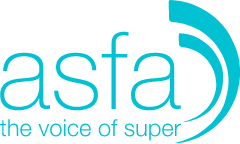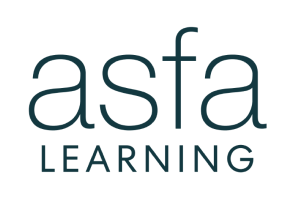Consolidation has been an enduring feature of the superannuation environment for more than a decade, with the big question for many funds not so much “if” but “when?” they would undergo a merger or acquisition. Scale, with its consequent efficiencies and ability to reduce the cost base in line with the member outcomes test, is probably the most frequently cited primary motivation for such a move.
However, in the NGS experience, scale was just one of many other considerations that led to our recent merger with QIEC. In our case, for example, the “when?” question was preceded by another, arguably more important one: “who?”.
The right alignment
At a macro level, and always with better member outcomes in mind, our first criteria in finding a merger partner related to alignment in certain key areas. It may surprise some commentators to know that, at least at this initial stage, those key areas did not include purely investment-related considerations. Rather, the areas of alignment we sought were:
Respective values
In our experience, far from being just words or ideals, values are the guiding principles that inform a fund’s most fundamental decisions. As such, they manifest tangibly in everything from investment philosophy to the way members are serviced. It is our strong view that misalignment at this basic level—no matter how good the “fit” might appear based on other criteria—leads to a disconnect between goals, actions and outcomes. Such a disconnect would, in our case, create an untenable risk to our core value of putting members first. Both NGS and QIEC recognised that we shared not only this “members first” approach but other principles as well, including a focus on working in partnership with our members and our strong commitment to financial empowerment through education. Our shared values were the starting point in all our decision making – the essential foundation for success in any merger.
Membership profiles
Both NGS’s and QIEC’s members are drawn primarily from the education sector and include a high proportion of women. As well as the clear advantage of having similar employment circumstances and investment styles, having this common member profile has a measurable practical effect on members. Just one example is insurance: the fact that our members have so much in common means there is a similarity in member risk profiles, with no need to make significant adjustments for higher risk professions or demographics. This ensured that our integration would not have the unintended knock-on effect of raising members’ insurance premiums or reducing their cover.
In choosing membership alignment, our intention was also to avoid creating a situation that might dilute our offering or devalue the service we currently provide. In our view, this is a risk when funds with very different member bases come together for no clear reason other than scale and FUM size. For example, maintaining our hands-on, in-person model of relationship management via workplace visits to schools at times that suit members’ workdays—which members see as a key benefit—was a major priority for us. Any requirement for us to adjust this model to a whole new set of member needs may well have eroded our ability to continue this level of tailoring. Once again, the central test here was member outcomes and ensuring that post-merger, members continue to come out ahead.
Our investment focus
Next we turned our attention to investment considerations. These could be broadly divided into two strands:
- our investment philosophies and how the merger might influence our future investment opportunities, and
- on a practical level, the operational implications of integrating our investment infrastructure.
A major consideration in any merger must be the potential issues that can and do arise when seeking to integrate two different businesses, and that applies equally to investment teams. In our recent experience, the fact that QIEC had an outsourced investment team took many of these potential issues off the table, smoothing and speeding what would otherwise be a lengthy and laborious process. Rather than spending time integrating personnel, systems and tackling logistics such as geography, we were able to immediately embark on a thorough review of QIEC’s underlying portfolio, conducting a systematic, like-for-like comparison between different consultants and managers. As a result, we were able to secure some extremely positive results in terms of both relationships and member outcomes. For example, we are now able to offer members access to new investment managers whose funds were otherwise closed, Solaris being a case in point.
When it comes to future investment opportunities, we are already seeing positive results from the merger. And yes, scale is a factor – but only to a point. The addition of $1.6 billion in FUM has delivered real benefits for members. Lower fees across most investment options is one of them, including a 10 bps reduction to the Diversified (MySuper) option as a direct result of increased scale across managers and lower fixed costs as a percentage of total FUM. Greater diversification is another instant benefit, in terms of both sectors and geography.
When it comes to future investment opportunities, we are already seeing positive results from the merger. And yes, scale is a factor – but only to a point
Increased scale has also increased our capability in both direct and co-investment opportunities across property, infrastructure and private equity, providing access to new opportunities, greater transparency over our investments and further future fee savings, which we currently estimate will be in the order of 10 to 15 more bps for the Diversified (MySuper) option.
Our expansion into new investment fields also has other positive implications for members. That includes offering an infrastructure option, an asset class not previously available to NGS members. Our capability for ESG initiatives has also expanded. Investments that are held in our mandates are of course, already subject to our discretions, based on risk/return assessment with exclusions such as tobacco, armaments and fossil fuels. Building on our Climate Change Statement released last year, new resources have enabled new research to analyse and design further strategies for managing ESG risk, including the planned release of a Stewardship Statement this year. Importantly, this involves addressing not only the immediate risk/return trade-off relating to climate change, but also the longer term intergenerational responsibility we have as a fiduciary for future generations. This approach is also very aligned with the concerns of our members who, as teachers, care deeply about these issues.
“Similar but different”
In summary, the post-merger NGS could perhaps best be described as “similar but different”. What’s important about those similarities and differences is that we have chosen them, in a highly-considered fashion, and always with better member outcomes as our goal. So, while our values, membership profile and member service models remain the same, our fees, range of investment options and ability to participate more actively in shaping the future on behalf of members has changed – for the better.
About NGS – pre-merger
- $9.55b assets under management
- More than 97,000 members
- 70% female
- Occupations:
- Teaching, management and support staff across the non-government education sector
- Employees in the age, health and community services sector
- Employees of customer-owned banking
- Primary geographic base: predominantly in NSW and SA
About QIEC – pre-merger
- $1.6b of assets under management
- Over 22,000 members
- 81% female
- Average age is 44
- Pr
imary geographic base: predominantly in QLD - Occupations:
- Employees in the childcare industry
- Employees in the age, health and community services sector.
About NGS – post merger
- FUM: $11.16b
- Membership base: more than 119,000 members
- 71% female
- Average age is 45
- Occupations:
- Teaching, management and support staff across the non-government schools
- Employees in the childcare industry
- Employees in the age, health and community services sector
- Employees of customer-owned banking
- Primary geographic base: predominantly in NSW, QLD and SA.





